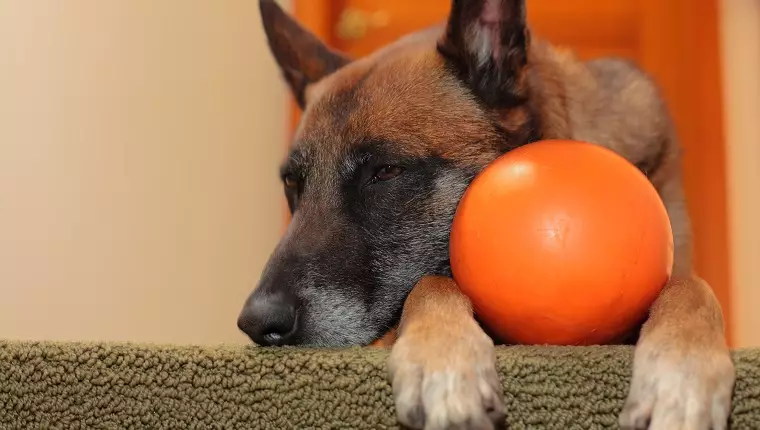As our furry companions age, they often slow down, but that doesn’t mean their physical and mental needs diminish. Senior dogs necessitate special attention to health and happiness, akin to a fine wine that matures gracefully with time. Engaging in regular exercise helps maintain their mobility and ideal weight, easing the burden on aging joints and bones. Moreover, physical activity is instrumental in warding off health maladies like diabetes or cardiovascular issues frequently linked to obesity. As loving pet owners, it’s crucial to design a thoughtful exercise routine for our older pets, promoting both their physical well-being and quality of life.
Before embarking on an exercise regimen, it’s imperative to consult a veterinarian. A thorough health assessment can offer insights into appropriate exercise levels and types that align with your senior dog’s unique needs. While the urge to be active is commendable, safety is paramount. Your beloved companion should never feel compelled to overdo it. Observing your dog’s reactions during exercise is vital; if they show signs of fatigue or discomfort, it’s time to take a break. With your vet’s guidance, you can pave the way for a safe and enjoyable activity plan.
Mental stimulation is equally, if not more, important in maintaining your dog’s well-being. Puzzle feeders have emerged as an excellent tool to engage aging minds and keep them sharp. Designed to challenge your dog mentally without demanding excessive physical effort, these feeders can be a delightful addition to their feeding routine. By using a slow feeder, or a treat-dispensing toy, senior dogs can learn to enjoy their meals while engaging their problem-solving skills. Products like Kongs can amuse and challenge them, all while supporting their physical health by slowing down their eating habits.
Though the traditional game of fetch may seem taxing for senior pets due to joint strain, adapting this classic activity can still offer enjoyable movement. Opt for softer, plush toys that provide safe handling without risking tooth damage. Playing fetch indoors on soft surfaces, like rugs, minimizes the chance of slips and potential injuries. Short, light tosses can keep your dog engaged and active without overwhelming them. Remember to keep water accessible, allowing your dog to stay hydrated, especially after play sessions.
Tug-of-war can be an entertaining and physically beneficial game for senior dogs, provided it’s played lightly. Using soft, squishy toys to prevent dental harm, this activity can also help maintain muscular strength in your dog’s neck and jaws. Although it’s essential to keep the game gentle, letting your dog win sometimes will bolster their confidence and maintain the enjoyment factor. This form of play not only keeps them engaged but can also serve as a bonding experience, reinforcing your dog’s sense of accomplishment and companionship.
For senior dogs facing mobility issues, consulting a canine physical therapist can open new avenues for pain management and physical activity. Professional guidance can provide you with effective, targeted exercises ranging from stretches to hydrotherapy. These sessions are designed to keep joints lubricated, maintain muscle flexibility, and promote overall mobility. Simple stretching routines that you can replicate at home are essential for nourishing your dog’s muscles and joints, potentially improving their gait and agility.
Engaging your dog’s sense of smell through fun “find it” games can be both rewarding and beneficial. You can hide treats or kibble around a room and encourage your dog to discover them. This simple yet effective exercise boosts mental stimulation while offering physical movement. Start with easy-to-reach areas to build confidence, gradually making the search more challenging. It’s critical to keep the hidden treats at a comfortable height to avoid excessive bending, ensuring that the activity remains enjoyable.
The adage “you can’t teach an old dog new tricks” is far from the truth. Older dogs can still learn new behaviors and respond positively to training sessions. Simple tasks that entail minimal physical exertion, like balancing a treat on their nose or walking in a figure eight between your legs, can be enjoyable and fruitful for you and your pet. Keeping training brief is key, allowing ample time for rest and recovery. Shower them with affection and praise regardless of their success, reinforcing their capabilities and keeping their spirits high.
Caring for a senior dog brings its unique challenges and rewards. By prioritizing their physical and mental health through tailored exercises and stimulating activities, you can enhance their quality of life. Always remember, the goal is not only to keep them fit but also to cherish the time spent together. So, break out the toys, plan some gentle activities, and celebrate the joys of companionship with your cherished golden companion. What’s your favorite way to keep your senior dog engaged and happy?


Leave a Reply